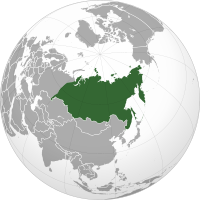
Photo from wikipedia
Abstract The SARS‐CoV‐2 coronavirus is responsible for the current COVID‐19 pandemic, with an ongoing toll of over 5 million infections and 333 thousand deaths worldwide within the first 5 months.… Click to show full abstract
Abstract The SARS‐CoV‐2 coronavirus is responsible for the current COVID‐19 pandemic, with an ongoing toll of over 5 million infections and 333 thousand deaths worldwide within the first 5 months. Insight into the phylodynamics and mutation variants of this virus is vital to understanding the nature of its spread in different climate conditions. The incidence rate of COVID‐19 is increasing at an alarming pace within subtropical Southeast Asian nations with high temperatures and humidity. To understand this spread, we analyzed 444 genome sequences of SARS‐CoV‐2 available on the GISAID platform from 6 Southeast Asian countries. Multiple sequence alignments and maximum likelihood phylogenetic analyses were performed to analyze and characterize the non‐synonymous mutant variants circulating in this region. Global mutation distribution analysis showed that the majority of the mutations found in this region are also prevalent in Europe and North America, and the concurrent presence of these mutations at a high frequency in other countries indicate possible transmission routes. Unique spike protein and non‐structural protein mutations were observed circulating within confined area of a given country. We divided the circulating viral strains into 4 major groups and 3 sub‐groups on the basis of the most frequent non‐synonymous (NS) mutations. Strains with a unique set of 4 co‐evolving mutations were found to be circulating at a high frequency within India, specifically. Group 2 strains characterized by two co‐evolving NS mutants which alter in RdRp (P323L) and spike (S) protein (D614G), were found to be common in Europe and North America. These European and North American variants have rapidly emerged as dominant strains within Southeast Asia, increasing from a 0% prevalence in January to an 81% by May 2020. These variants may have an evolutionary advantage over their ancestral types and could present a large threat to Southeast Asia for the coming winter.
Journal Title: Transboundary and Emerging Diseases
Year Published: 2020
Link to full text (if available)
Share on Social Media: Sign Up to like & get
recommendations!